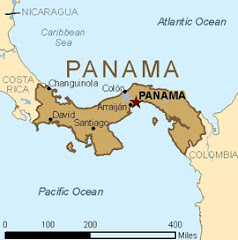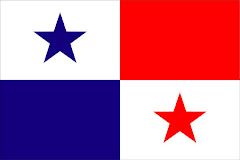Wednesday, September 2, 2009
Tuesday, September 1, 2009
Climate
Climate: tropical climate has two seasons, one dry and one rainy. Variations depend on the region and altitude. The Caribbean coast sees rain year-round, while the Pacific coast has a more pronounced dry season. The Azuero Peninsula has an extremely arid climate during the dry season. In contrast, the mountains get plentiful rain during the wet season.
Land
Land: It has an elongated S shape, with its Caribbean coastline stretching some 800 miles (1,290 km) and the Pacific coast some 1,060 miles.
What does the flag stand for?
What flag stands for: The stars and quarters are said to stand for the rival political parties, and the white for the peace in which they operate. Blue was the color of the Conservatives, and red the color of the Liberals.
Exports, Imports, and trading partners
Major Exports: bananas, shrimp, sugar, coffee, clothing
Major Imports: capital goods, foodstuffs, consumer goods, chemicals
Major Trading Partners: Brazil, Mexico, Argentina, Chile, Peru, Colombia, Venezuela, and Panama are India’s major trading partners
Climate
Climate: tropical maritime; hot, humid, cloudy; prolonged rainy season (May to January), short dry season (January to May)
Population
Population: 3,191,319… largest age group in Panama was the 5 to 14 age group with about 550,000 people. In comparison, those over the age of 60 number only 240,000. By 2025, the demographics of the nation will have shifted, and the largest single group of people will be in the age group 30 to 39, and by 2050, the largest group will be over those over the age of 55. mainly Spanish and Native-American


